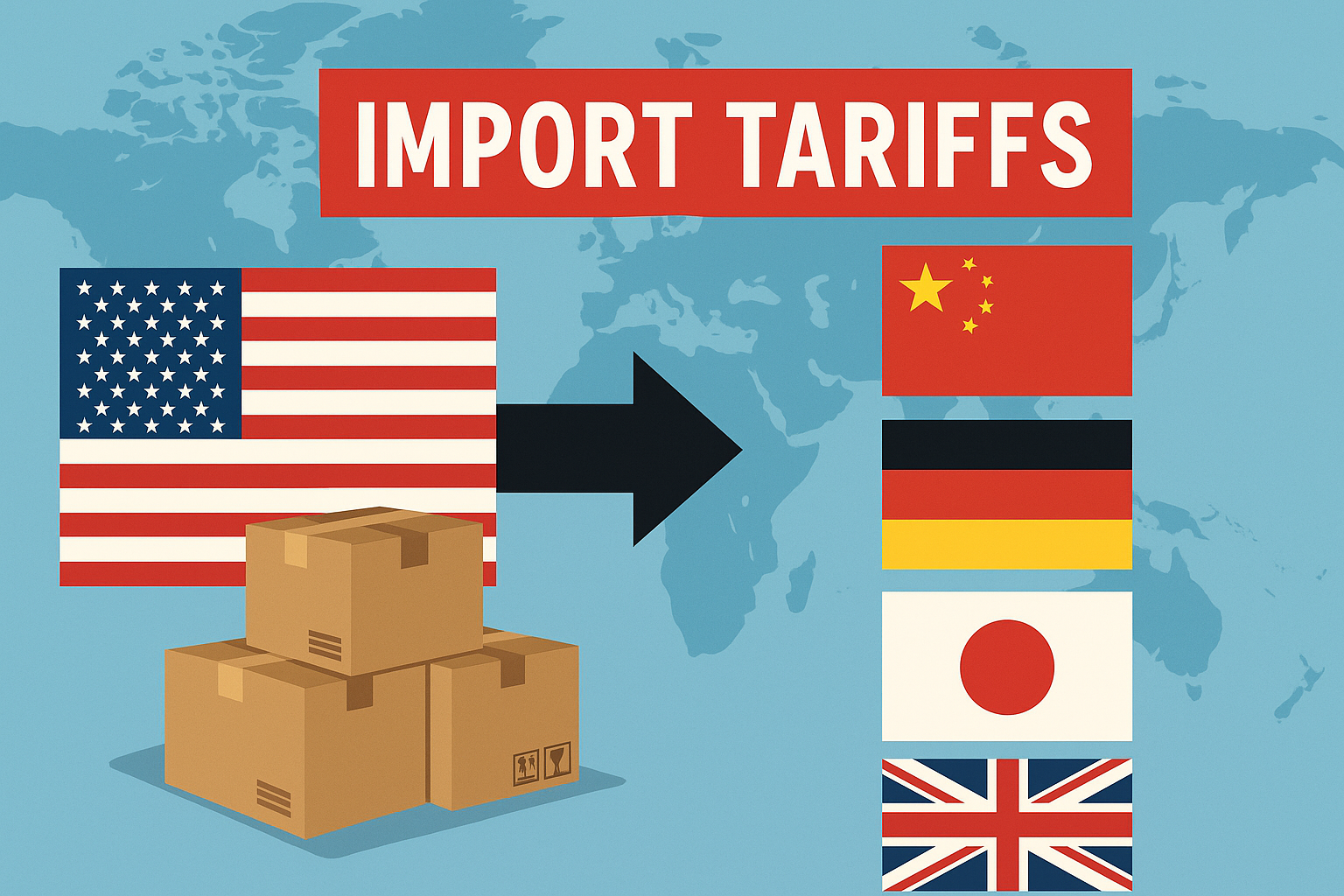In a major shift in U.S. trade policy, President Donald Trump has imposed new import tariffs on goods from over 60 countries. These “reciprocal tariffs” aim to counter what the administration views as unfair trade practices and large U.S. trade deficits. The tariffs, which vary by country, are part of a broader strategy to protect American manufacturing and reduce reliance on foreign imports.
This article provides an in-depth look at the specifics of these tariffs, the countries affected, economic and political implications, and the response from international communities.
What Are Reciprocal Tariffs?
“Reciprocal tariffs” are trade duties imposed to match the rates that other countries charge on American exports. According to Trump, many foreign nations have long benefited from low or no tariffs when exporting to the U.S., while imposing heavy duties on American goods. His administration argues that the new tariff structure levels the playing field.
Summary of the New Tariff Rates
Baseline Tariff
- 10% minimum tariff applied across the board to all countries without special trade agreements or waivers.
Countries Facing Higher Tariffs
| Country | New Tariff Rate | Notes |
|---|---|---|
| Canada | 35% | Due to disputes over lumber, dairy, and energy |
| Brazil | Up to 50% | Political tensions, digital tax disputes |
| India | 25% | Reciprocal on Indian tariffs, digital policy concerns |
| Taiwan | 20% | Retaliation over semiconductor trade restrictions |
| South Africa | 30% | Over raw material export bans |
| Switzerland | 39% | Cited for currency manipulation |
| Syria | 41% | Highest rate; political sanctions added |
| Laos & Myanmar | 40% | Alleged labor rights and environmental violations |
Major Economies with Negotiated Rates
- European Union: 15% after negotiations.
- United Kingdom: 15%, includes partial exemptions.
- Japan: 15%, limited to non-automotive goods.
- South Korea: 15%, under revised bilateral agreement.
- Vietnam: 15%, with a cap on electronics.
Exemptions
- Mexico received a 90-day grace period to renegotiate.
- Nations in active free trade agreements (e.g., USMCA for some sectors) may be partly exempt.
Key Sectors Affected
1. Automotive
Tariffs may drive up costs for vehicles manufactured abroad, especially from Europe and Japan. U.S. automakers with overseas factories could also be affected.
2. Technology and Electronics
Many electronics parts are imported from East and Southeast Asia. Tariffs could raise prices for laptops, phones, and other devices.
3. Agriculture and Food
Countries like Brazil and India supply fruits, spices, and meat. Tariffs may increase consumer prices in grocery stores.
4. Clothing and Textiles
Nations like Vietnam and Bangladesh are major exporters to the U.S. Tariffs in this category are expected to trigger cost hikes across fast fashion and apparel brands.
Global and Economic Impact
International Reactions
- European Union: Warned of potential retaliation.
- India: Called the move “unilateral and aggressive.”
- Canada: Labeled the tariffs “unjustified and harmful.”
Economic Consequences
- Inflation: Likely to increase, especially in consumer goods.
- Market Volatility: Stock markets briefly dipped after the announcement.
- Supply Chain Disruptions: Tariffs may force companies to shift sourcing or manufacturing locations.
Legal and Political Challenges
Trump used powers under the International Emergency Economic Powers Act (IEEPA) and Section 301 of the Trade Act to impose these tariffs. However, legal experts have questioned whether such widespread tariffs can be justified under emergency authority, and lawsuits have already been filed in federal courts by trade groups and importers.
Public and Industry Response
Supporters Argue:
- Strengthens domestic industry
- Balances trade deficits
- Improves national security and supply chain resilience
Critics Claim:
- Hurts consumers through higher prices
- Strains diplomatic relationships
- Risks triggering a global trade war
Conclusion
Trump’s new import tariff strategy marks a significant shift in global trade dynamics. While aiming to create fairness for American industries, it introduces new economic challenges. Whether this approach leads to renewed manufacturing strength or escalating trade tensions remains to be seen.
For now, businesses and consumers alike should prepare for a more protectionist era in U.S. trade policy.
FAQs
Q1: When do the new tariffs take effect?
A: The tariffs are scheduled to begin on August 7, 2025.
Q2: Will this affect online shopping or e-commerce?
A: Yes. Many imported electronics, clothing, and accessories sold online could become more expensive.
Q3: Is this the final tariff list?
A: No. Trump’s team stated the list may evolve based on ongoing negotiations.
Q4: Can countries challenge these tariffs?
A: Yes. Countries may appeal to the World Trade Organization (WTO) or retaliate with their own tariffs.
Q5: How will this affect inflation in the U.S.?
A: Economists warn of short-term price hikes, especially for imported goods, which may drive inflation.
